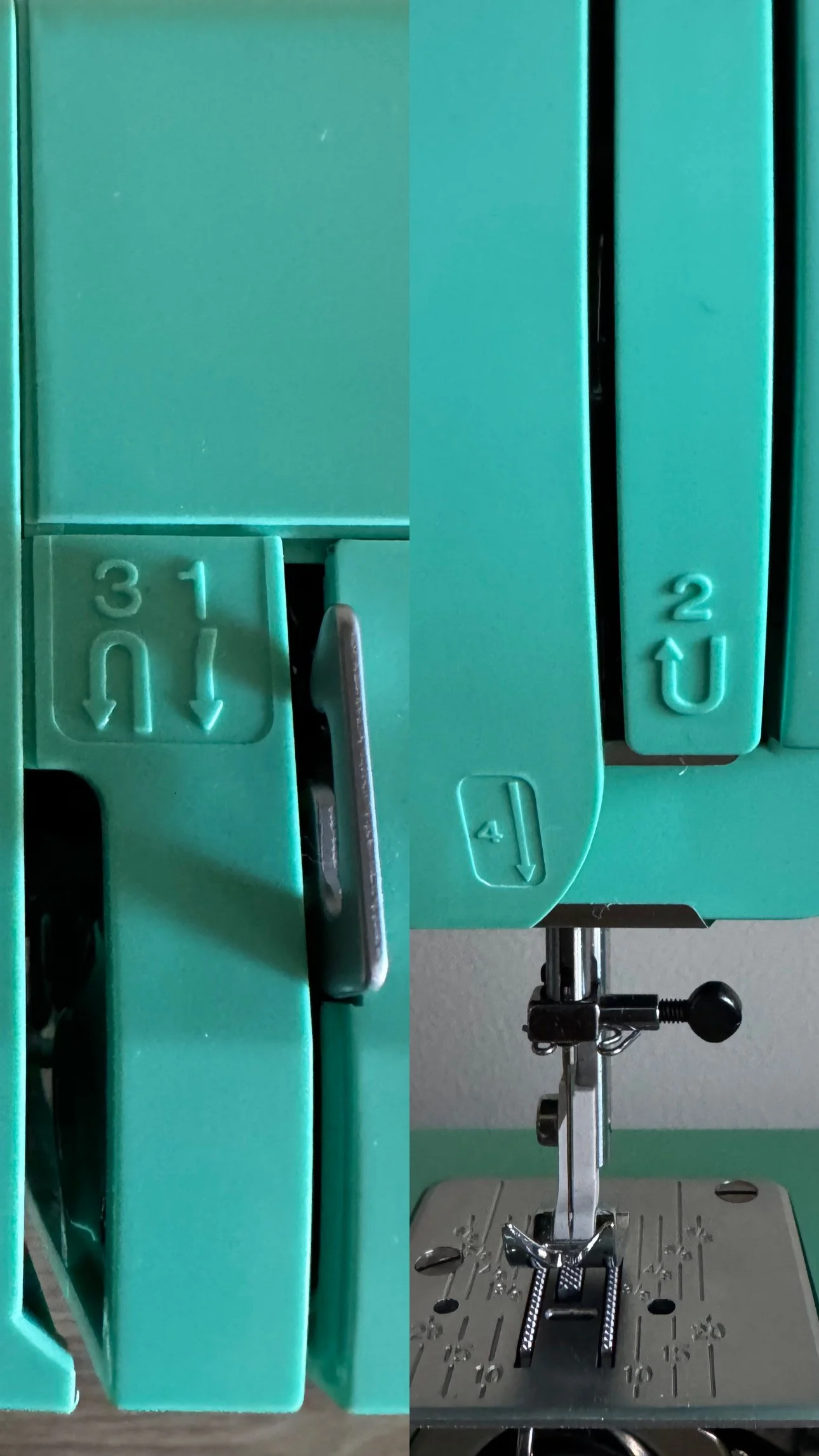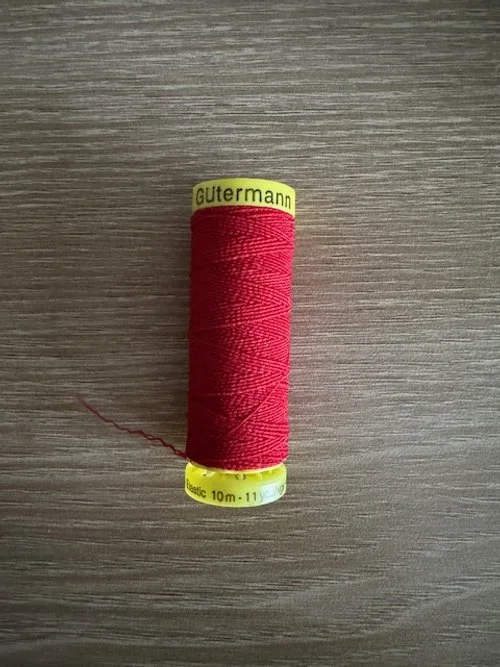Beginner Sewing Tips
Sewing is an art that combines creativity with technical skill. Whether you are just starting or looking to refine your technique, learning from a master tailor can save you time a frustration. In this post, we’ve gathered expert advice to answer some of the most common beginner sewing questions.
Beginner Tips & Basic Stitches 101
〰️
Beginner Tips & Basic Stitches 101 〰️
Price, Quality, Ease & Speed?
Key Features to Look for in a Beginner Sewing Machine
Ease of Use- Look for a machine with straightforward controls, clear stitch settings, and an easy to thread design. A well-marked threading path, simple bobbin winding, and a front or top-loading bobbin system can make setup hassle free. Machines with a manual tension adjustment dial and clearly labeled stitch selector also help beginners get comfortable with sewing basics.
Built in stitches- A machine with basic stitches (straight, zigzag, buttonhole) is all you need to start.
Speed Control- A variable speed setting allows beginners to sew at a comfortable pace.
How to Pick Your First Sewing Machine
Truthfully, there is no right or wrong answer. There are endless possibilities to choose from. The final decision depends on you and where you would like to take your sewing journey. We will help you by providing tips on key things that will give your sewing experience less hassle. We will provide a short list of recommended beginners sewing machines a little later. For now, let’s visualize those key things using a Janome model.
Janome New Home: Arctic Crystal
Easy to thread design
Bobbin winding directions
Some machines like the Janome New Home, come with labeled needle guides and visual directions for loading the bobbin. They also have detailed guides on their website.
Built in stitches
Stitch Selectors
Budget Considerations
Starting a new hobby can be costly. However, with a bit of time and research it can still be a budget friendly hobby.
Entry level machines typically cost $100-$300 depending on the brand and machine features.
Mechanical Machines- More affordable, great for basic sewing, and require less maintenance.
Computerized Machines- Offer precision, automatic stitch settings, and advanced features but may have a learning curve.
Avoid overly cheap machines as they lack durability and cause frustration.
What is a good first project to start with?
Clothing Projects
Elastic Waist Skirt- Simple to sew with minimal pattern work.
T-shirt Crop Top or Tank- Modify an old T-shirt into a trendy new style.
Easy Lounge Shorts- Learn basic shaping and elastic waistbands.
Infinity Scarf- A quick project that helps practice hemming
Wrap Skirt- No zippers or buttons, just simple ties!
OR
Upcycling Projects
Denim Tote from Old Jeans- Reinvent worn-out jeans into a sturdy bag.
Oversized Shirt to Dress or Tunic- Reshape a large shirt into a stylish outfit.
Patchwork Denim Jacket- Use fabric scraps to personalize an old jacket.
Sweater Mittens or Beanie- Turn an old sweater into cozy accessories.
Here are a few beginner sewing machines you can research to decide what suits your needs.
Janome New Home 49360
Why it’s great for beginners: Lightweight, easy to use, and offers 60 built-in-stitches, making it versatile for different projects.
Best for: Beginners who want a durable machine that can grow with their skills.
2. Brother CS6000i
Why it’s great for beginners: Features automatic speed control, an easy threading system, and a top loading bobbin.
Best for: Those who want an affordable, computerized machine with user-friendly features.
3. Singer Heavy Duty 4423
Why it’s great for beginners: Strong motor for sewing through thick fabrics like denim and leather, plus 23 built-in stitches
Best for: Beginners interested in upcycling or working with heavier fabrics.
4. Janome 2212
Why it’s great for beginners: A mechanical, no-frills machine with 12 built-in stitches and manual dials for easy control.
Best for: Beginners who want a simple, durable machine without overwhelming features.
5. Bernette 33
Why it’s great for beginners: Sturdy, all-metal interior for longevity, with 15 built-in stitches and a front-loading bobbin.
Best for: Those looking for a reliable beginner machine with a classic feel.
Additional Accessories That Help Beginners
Extra presser feet (zigzag, zipper, buttonhole) - for versatility.
Zigzag Foot- Best for installing regular and invisible zippers piping and stitching close to edges.
Zipper Foot- Used for sewing zippers close to the zipper teeth without interference. Best for installing regular and invisible zippers, piping, and stitching close to edges.
Buttonhole Foot- Best for making consistent professional buttonholes on garments, home decor, and accessories.
Built-in free arm- to easily sew sleeves and cuffs.
Adjustable stitch length & width- for flexibility in different projects.
Learning a new skill can be challenging. We want to help build your confidence by providing you with key things to pay attention to.
One of the biggest mistakes beginners make is rushing through projects without proper preparation. Taking the time to measure, mark, and pin your fabric correctly can prevent costly errors.
Always pre-wash fabric to prevent shrinkage after sewing.
Use the right needle for your fabric type (i.e. ballpoint for knits, universal for cotton.)
Invest in sharp fabric scissors- dull ones can lead to jagged edges.
Using the Sewing Machine
A few things you should practice while getting to know your machine:
Taking long seams- Practice taking long seams on two layers of cloth of similar lengths, with the view of finishing the seams with the ends matching. Sewing machines tend to “full in” the lower layer of cloth, thus causing the upper layer to extend beyond the end of the seam. This error is caused by the lower layer of cloth contacting the dented plate of the machine, which forces the cloth to move forward while the upper layer of cloth is help back by the stationary foot bearing down on it.
Sewing Backward- Practice sewing backward as well as forward. It is necessary to begin and end most seams with a few bac-and-forth stitches to fasten the ends
Starting a seam- In starting a seam, always hold the end of the upper and lower threads with index finger of the right hand. Leaving loose ends will result in their being lost or becoming gnarled. Start and end all seams will a few back and forth stitches
Adjusting thread tension- Thread tensions on the machines can be adjusted for the upper thread and the lower thread.
Thread Brands and Types
We recommend investing in good brands like, Gutterman, for your threads. Cheap threads can cause frustration as they tend to break easily.
There is a wide range of thread weights, colors, and materials.
Cotton Thread
Weight: 40 wt
Projects: Quilting, patchwork, lightweight apparel
Polyester Thread
Weight: 50 wt
Projects: Garment sewing, home décor, general-purpose stitching
Silk Thread
Weight: 100 wt
Projects: Fine garments, hand-sewing, embroidery
Nylon Thread
Weight: 70 wt
Projects: Leatherwork, outdoor gear, upholstery
Heavy-Duty Thread
Weight: 30 wt
Projects: Denim, canvas, heavy fabrics
Embroidery Thread
Weight: 40 wt
Projects: Machine embroidery, decorative stitching
Basting Thread
Weight: No. 12
Projects: Temporary holds in quilting, sewing
Invisible Thread
Weight: Varies
Projects: Hemming, clear stitching methods
Still have more questions?
Submit your questions on our FAQ page or contact us!











